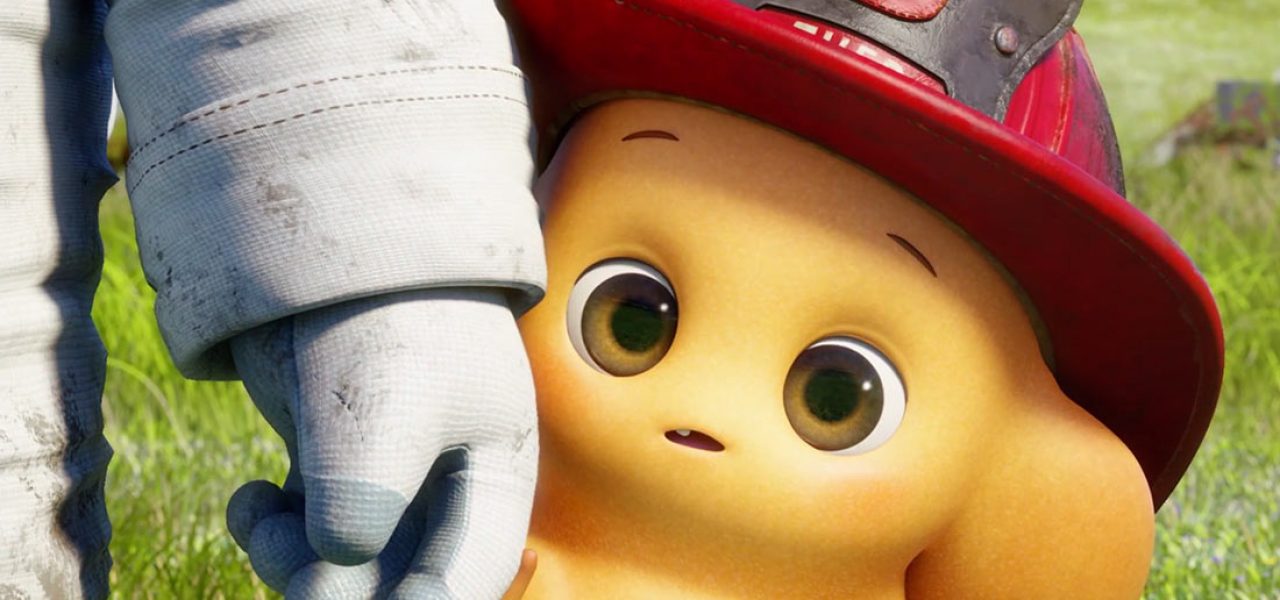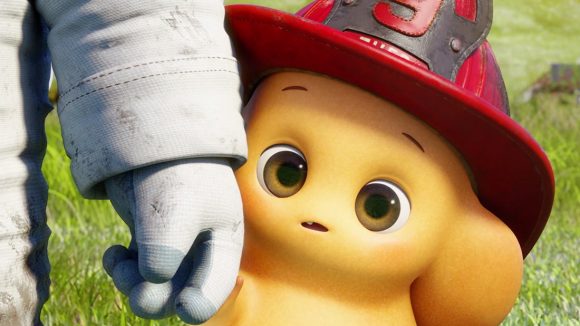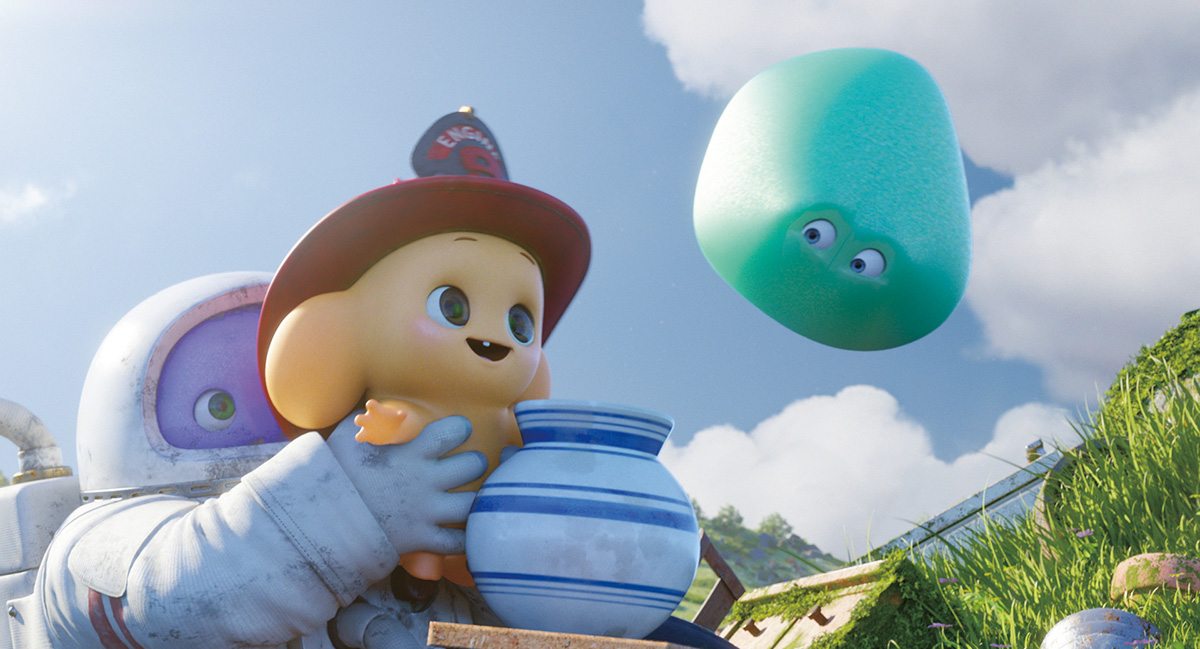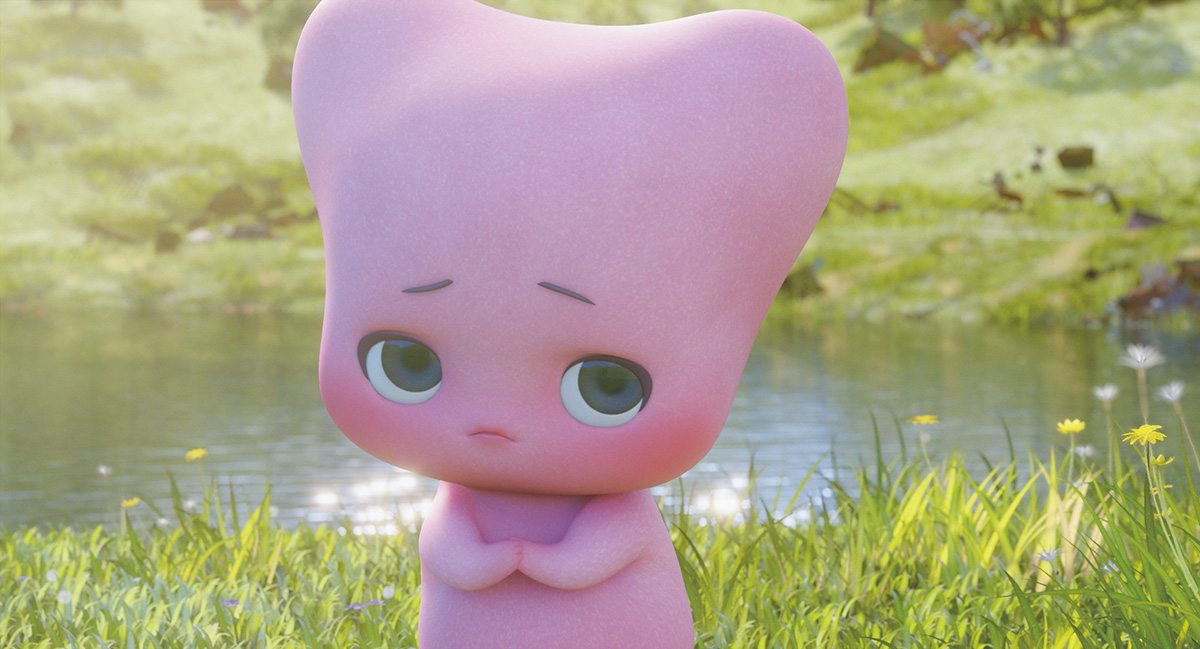

‘Moom’ Trailer Exclusive: ‘The Dam Keeper’ Filmmakers Discuss Japanese Influences On Their Latest Film
Dice Tsutsumi and Robert Kondo’s newest short film, Moom, just got a new trailer, and Cartoon Brew has it here exclusively for our readers.
Moom is a 13-minute short that Tsutsumi and Kondo, who were also behind the Oscar-nominated short The Dam Keeper, oversaw via their Tonko House production company. It represents a relatively large departure from the 2D animated feel of The Dam Keeper by relying on a 3D/cg approach. Even more notably, Moom made heavy use of Japanese animators, a deliberate move by the directors to infuse a different kind of sensibility into the film.
Japanese Influence
Moom is based on a Japanese children’s book by Genki Kawamura about a creature that helps release memories in a strange world. The book was illustrated by Yuki Mashiko, so the Japanese influences were readily apparent from the get-go. But Tsutsumi and Kondo particularly wanted to influence the filmmaking style by having animation be done in Japan, even though they themselves were based in San Francisco.
“A lot of the animation directing was done over video conferencing, so we spent a lot of time preparing,” said Kondo. “Ultimately, Dice would deliver the notes and discuss things in Japanese. Not being in Japan, in person, to review the work was difficult. It meant Dice had to be careful in his approach to give feedback and provide the right amount of motivation.”

The directors say they pushed the Japanese team (from animation studio Marza Animation Planet) to participate and collaborate in the filmmaking. Unlike in the United States, it is considered less customary in Japan for animators to propose new ideas. Earlier, on The Dam Keeper – made in the U.S. – Tsutsumi and Kondo had explicitly relied on its crew to challenge them with suggestions to make the film better and they wanted to manufacture a similar environment with the animators in Japan for Moom.
“In the end,” said Kondo, “we loved working with the animators in Japan because, though it was difficult at first, the artists we worked with persevered and were open to new ways of working.”
Animation Approach
Starting with the look of the children’s book, the filmmakers expanded the world of Moom by taking the cg approach. The technique enabled richer textures of the ‘forgotten’ objects featured in the film and grander views of the plains and hills of grass than traditional animation would have provided.

“The story could have been told in 2D,” said Tsutsumi, “but the experience we wanted to deliver and what we wanted to focus on as filmmakers was more attached to our experience working at Pixar, working in cg imagery.”
“CG lighting experts here in the states like Gaku Nakatani helped us work in post to plus the work done at Marza,” added Tsutsumi. “We had not done a lot of work in cg using post processes; programs like Nuke were utilized to adjust the lighting post rendering.”
Armed with those techniques, the directors focussed on the character’s loss and growth as he meets another memory. Their work was inspired by the loss of Kondo’s grandmother when he was four years old, which meant Moom’s story also took place around that age and implemented an accompanying animation style.
“For Robert, it was the first time in his life he remembers experiencing the loss of someone he deeply cared about,” said Tsutsumi. “At that young age, it was difficult to process what it meant to be forever separated from someone you loved. The character of Moom is similar in his difficulty understanding loss and separation.”
Added Kondo: “Dice’s son was around that age during the making of the film, and we would reference videos of him walking and moving. It is appealing to see the innocence of a child as they are becoming comfortable with their motor skills.”
What’s Next?
Moom has already won 20 awards at various short film festivals (it’s screened at 66 fests so far) and will next be shown at the Chicago International Children’s Film Festival on November 2nd. Tsutsumi and Kondo are currently working on book two of a three-book graphic novel series, as well as their feature film adaptation of The Dam Keeper.
“We will continue to work on the craft of telling stories, and continue to tell stories that come from deep within us to try to relate to our audience,” said Kondo. “We hope to continue to make films in Japan, and dream of making stories and films in other places as well, trying to find places who might benefit from working with us, and who we would learn and benefit from working with.”
